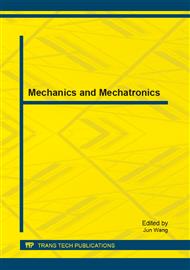p.735
p.740
p.745
p.751
p.756
p.761
p.768
p.774
p.778
Development of Portable Microclimate Water-Cooled Thermoregulation Systems for Active Stokehold Protective Garments
Abstract:
The active stokehold protective garments (ASPG) can remove body heat of ship stokehold operators working in confined and extremely hot environment via conductive heat exchange from circulating water-cooled fluid next to the skin through the body-temperature-monitoring method. Hence, portable microclimate water-cooled thermoregulation systems (MWCTS) for the ASPG have been developed by using programmable embedded system-on-chip (PSoC) in this paper. The ASPG have advantages of longer cooling periods, better temperature-controlled capability, and excellent thermal somatosensory comfort. Furthermore, they could allow users to adjust comfortable temperature and also maintain long-term constant temperature by monitoring human temperature in portable MWCTS. Additionally, optimal control algorithm may enhance system efficiency to reduce the power consumption and extend the operating time effectively; thus, the velocity and temperature closed-loop control systems have also been improved in the portable MWCTS for the ASPG. Consequently, several experiments have been implemented and explored the impact of the heat transfer rate and verified the feasibility of the MWCTS for ASPF.
Info:
Periodical:
Pages:
756-760
Citation:
Online since:
October 2013
Authors:
Price:
Сopyright:
© 2013 Trans Tech Publications Ltd. All Rights Reserved
Share:
Citation:


